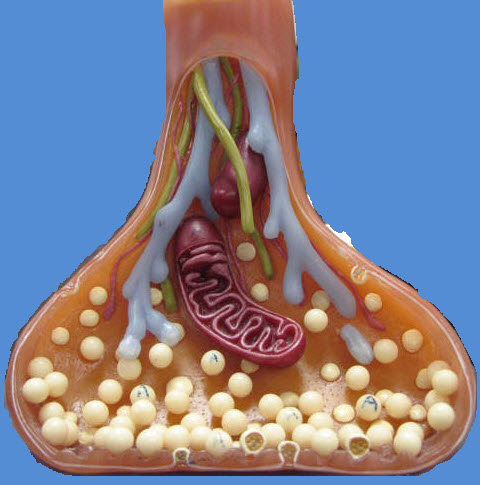Synapses and nervous system plasticity
 A short video introduces the concept that multiple synapses are formed by developing neurons in the fetal brain. Those synapses that are not used do not persist and neural pruning removes unused synapses, by pruning the dendrites or axons of neurons. Students complete some notes about IB details using a worksheet. A second video explains the role of nervous system plasticity, the ability to change with experience and this is followed by an example of blindness and then the recover of a stroke victim.
A short video introduces the concept that multiple synapses are formed by developing neurons in the fetal brain. Those synapses that are not used do not persist and neural pruning removes unused synapses, by pruning the dendrites or axons of neurons. Students complete some notes about IB details using a worksheet. A second video explains the role of nervous system plasticity, the ability to change with experience and this is followed by an example of blindness and then the recover of a stroke victim.
Lesson Description
Guiding Questions
- What is the role of connections between neurones in the development of the nervous system?
- What happens to unused synapses?
- What happens to synapses which are used regularly?
Activity 1 - Synapse formation
Watch the short video introducing the complexity of a baby's brain.
![]() The secret life of the brain PBS a baby's brain (mini)
The secret life of the brain PBS a baby's brain (mini)
Answer the following questions ![]() Development of a fetal brain to make structured notes about the importance of synapses in the development of the brain.
Development of a fetal brain to make structured notes about the importance of synapses in the development of the brain.
Activity 2 - Neural plasticity - including neural pruning and the role of attention
This video describes some of the changes which occur to neurons in the brain through the process of neuroplasticity.
Watch the video, ![]() Neuroplasticity by Connor Layson and produce a flow diagram showing how changes in the brain lead to learning.
Neuroplasticity by Connor Layson and produce a flow diagram showing how changes in the brain lead to learning.
Activity 3 - Application - recovery after a stroke
The video above shows how the brain can change and adapt if a person is blind. This same process would also help a person to recover from a stroke.
A stroke is damage to a specific part of the brain caused by a loss of blood flow to brain cells.
Watch the following short video ![]() Life after a stroke - an example of stroke symptoms.
Life after a stroke - an example of stroke symptoms.
Answer the following question
1. How could brain function be reorganized after a stroke?
................................................................................................
................................................................................................
Teacher's notes
A great extra video on neural plasticity and the brain. Including some discussion of recovery from strokes
![]() After watching this your brain will not be the same- LaraBoyd - TEDx
After watching this your brain will not be the same- LaraBoyd - TEDx
A stroke survivor Bill Gasiamis explains ![]() How to use your brain's neuroplasticity to recover after a stroke
How to use your brain's neuroplasticity to recover after a stroke
This activity covers the following points:
- A developing neuron forms multiple synapses.
- Synapses that are not used do not persist.
- Neural pruning involves the loss of unused neural connections, dendrites and/or axons are removed.
- The plasticity of the nervous system allows it to change with experience.
- Application: Events such as strokes may promote reorganization of brain function.

 IB Docs (2) Team
IB Docs (2) Team
